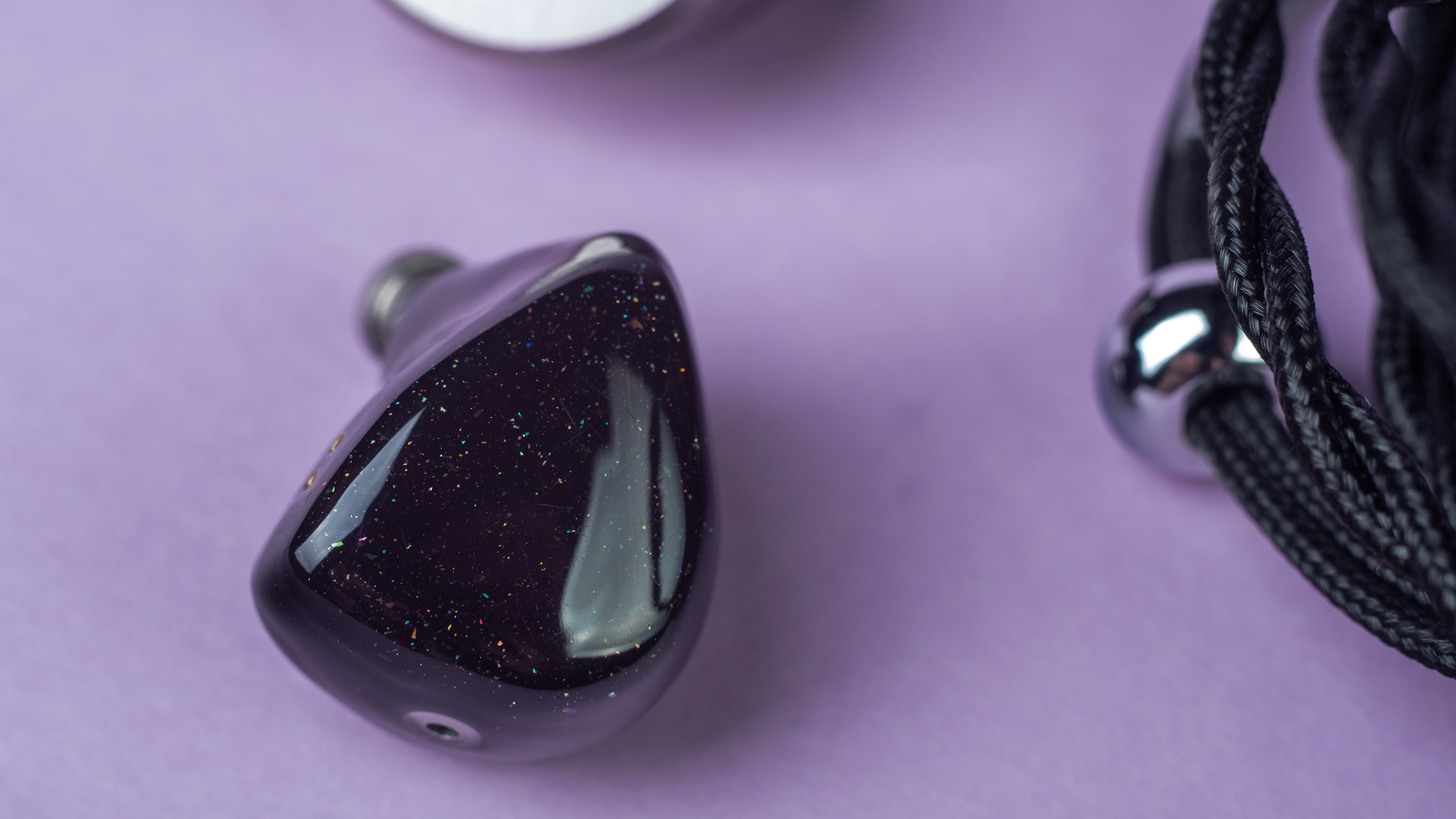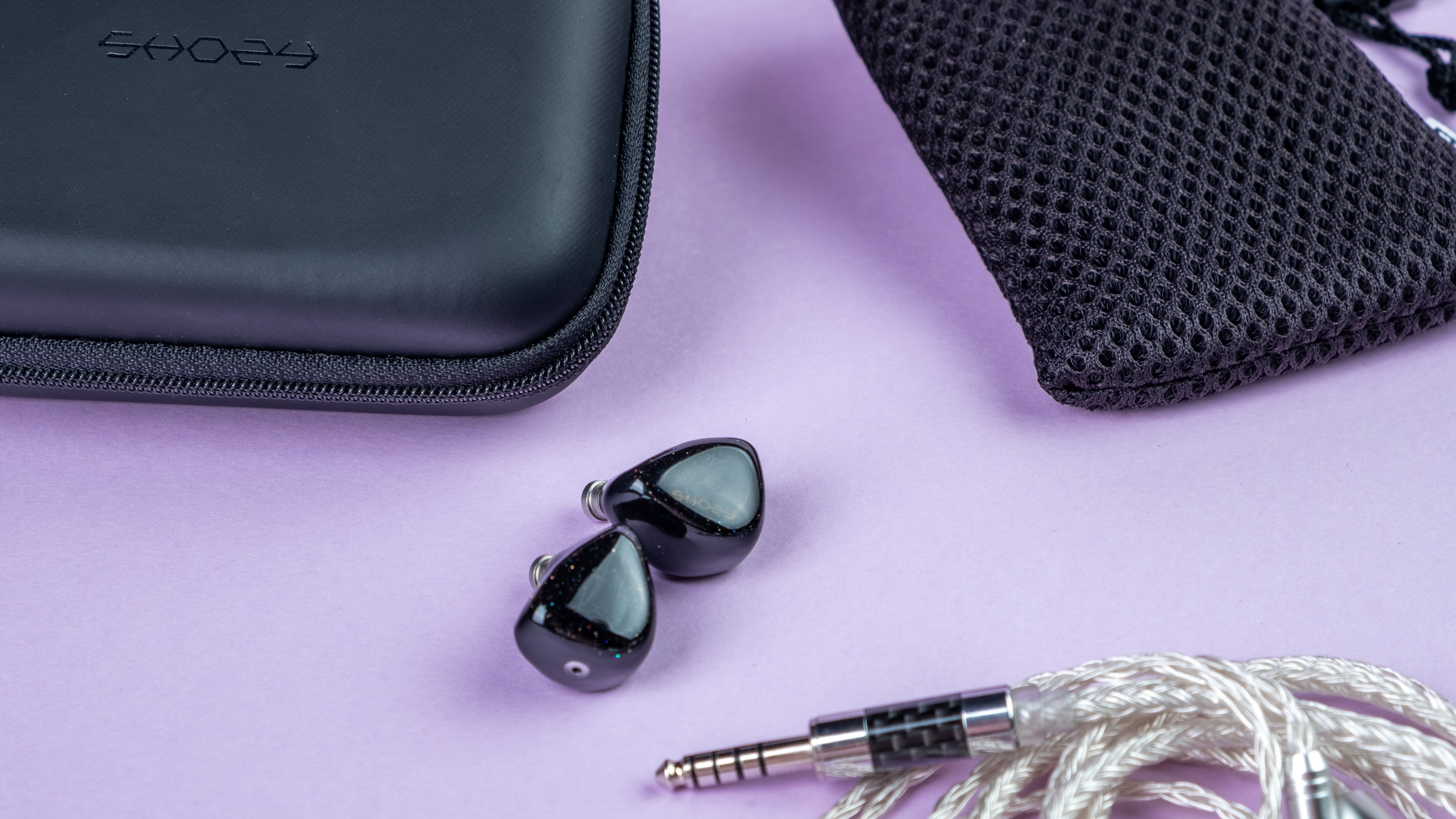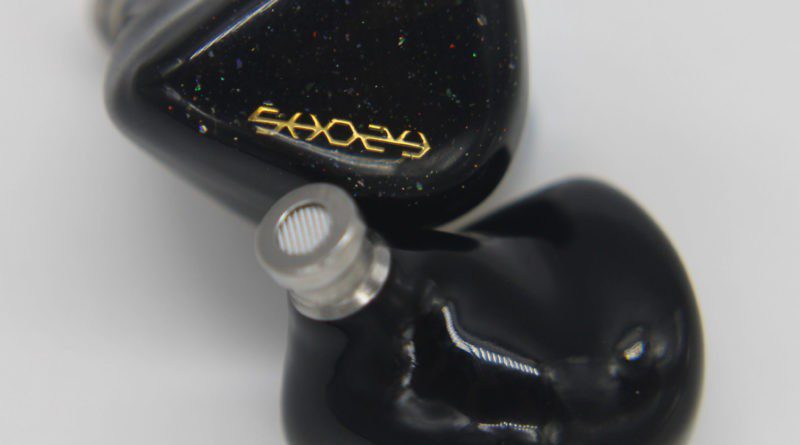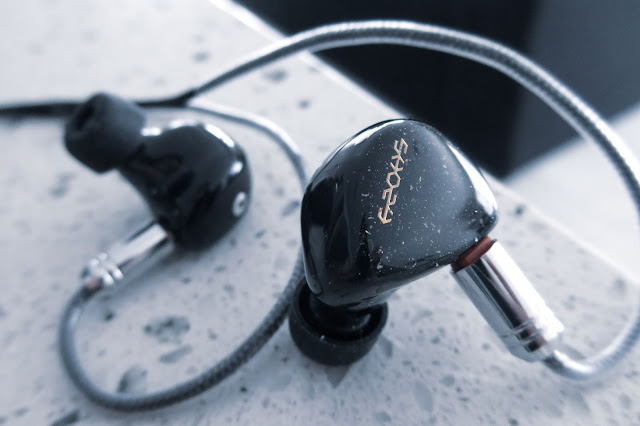Shozy Form 1.1 ($75): What form doeth thee take?
Shozy 1.1: http://www.shozy-hk.com/form11
Linsoul
Amazon
Much has already been written about the Shozy 1.1, and the 1.4. Some reviews have noted the benefits of each, as well as the virtues of “upgrading” to the 1.4 or not. Many suggest not to upgrade and stay with the 1.1. After my initial listen, I tend to lean that way, but I have not heard the 1.4. My basis? The sound had good clarity and a reach of mid-bass that was quite pleasing. As per my usual, after an initial listen and a bit of tip rolling, the 1.1 was put on my Shanling M2x for 75-90 hours before critical listening. Yes, I snuck a listen but just to make sure all was still good.
I have had the pleasure of many Shozy models, starting with the Hibiki 2, which is still one of my early east-Asian favorites. Tuned with an exciting sound, and good bass I really enjoy the sound. I also participated on the AAW x Shozy Pola/Pola39 tour. While I applaud the combining of forces such as this, I could not feel full love for either Pola model. I preferred the straight Pola and found that (to me) it would be a hard compete for either to make headway at their respective prices. Many disagree, and that can be the “beauty and the beast” of reviewing. But this can also provide a valuable service as well, since if all like the product and nothing is written to the averse, then in this hobby you either found a TOTL CIEM, of much acclaim or you are looking at the Ferrari LaFerrari.
You need not worry here, though as the 1.1 is a very competent sub-$75 IEM and well worth a listen. I thank Linsoul for the sample and will provide an open and honest review. We would have it no other way. It is also understood that even though this is a sample, it may be asked back for at any time. Until then, it is implied to be mine to keep. But not to resell, because that is uncool. Really uncool.
Specs:
Frequency: 20Hz-20kHz
Sensitivity: 100dB (SPL/mW)
Impedance: 19 ohm
Driver(s): 9.2mm Be Dynamic Driver, single Balanced Armature
Connectivity: 2-pin 0.78mm
Cable: Pure copper
From Amazon:
- 1BA+1DD Hybrid Driver. Shozy Form1.1 equips with one balanced armature for mids-treble region and one 9.2mm beryllium dynamic driver for sub-bass-mids region. The Large diameter dynamic driver (9.2mm) can move a lot of air while keeping the bass attack and response fast and accurate by using latest beryllium coating materials. The BA is tuned to sound lush and controlled. You can hear clean cymbals, clear vocals
- Metallic Venting and Nozzle. Metallic back air vent design is developed for the dynamic driver to adjust the air pressure inside the chamber to control the bass decay and it’s positioned on the side without blockage when inserted. While the quality metallic nozzle is premium built for durability
- Handcrafted Faceplate. The colorful cosmic theme faceplate is made from reflective materials with which you can get different reflected spectrum at different angles. It’s a fun and spectacular design. The handmade body also adopts the latest 3D printing framework and is post processed by applying resin topcoat, polished by craftsmen manually
- 2 Pin Detachable Pure Copper Cable. Coming with the Form 1.1 earphones are a fabric-shielded high purity copper cable chosen for the project. There is good synergy for this combo and metallic parts and terminations are chosen for better durability and sound
- What You Will Get? We at Linsoul are dedicated to give to utmost importance on our user’s satisfaction which is why we made sure to include a 12-MONTH limited warranty security for your audio investment, keep your mind and ease and focus on your audio sessions more
In the box:
Shozy Form 1.1 IEM
Copper cable
Soft-case-rectangular
3 sets white foam tips (s/m/l)
3 sets double-flange white silicon tips (s/m/l)
3 sets single flange black bass-enhancing tips (s/m/l)
Compared/Sources:
TinHiFi T4 ($79)
CCA C16 ($99)
Oriolus Finschi ($179)
Ikko OH-1 ($140)
Shanling M2x
Cayin N6ii (E01 module)
Dethonray DTR1
Songs used:
Dave Mathews albums, Come Tomorrow, Away From The World
Los Lonely Boys- Heaven (en Espanol)
Los Lobos album, Disconnected In New York City
twenty one pilots-Trees
twenty one pilots-Car Radio
twenty one pilots-Heathens
twenty one pilots-Forest
Damian Marley-Everybody Wants To Be Somebody
Damian Marley-So A Child May Follow
Damian Marley-The Struggle Discontinues
Ziggy Marley-Lighthouse
Ziggy Marely-See Dem Fake Leaders
Mark Knopfler-Laughs And Jokes And Drinks And Smokes
Santana w/ Mana- Corazon Espinado
twenty one pilots album, Trench
Mark Knopfler album, Down The Road Wherever
Unboxing:
You are met with a smaller rectangular box, replete with a nice presentation on the front and specs/frequency response graph on the back. It has been said that the frequency graph is a mistake, because it has not reference. And while I would agree that numbers and a graph would be nice, the point is still there with the dips and peaks. It is mostly flat until a peak about 4kHz, with a slight dip before that. Then the requisite drop until you hit 20kHz. No big deal to me.
OK, sidelight aside, you open the magnetic flap to reveal another “lid” with two flaps. Thinking that you pry one open to get beneath, I promptly ripped the lid. Taking the lid out, reveals the case with everything inside. While I appreciate presentation and a lack of foam (package is completely recyclable), some other solution might have been better. Oh well, I’m past it. Undoing the cases zipper reveals the IEM, cable and tips. In other words, the good stuff.
Fit-n-Finish:
All Shozy review units I have had in the past on both tours and samples have been of good quality. The Form 1.1 is no different. Essentially one solid piece forms the bud due to the cover finish, but I could feel a slight imperfection where the decorative cover attaches to the housing. The finish does a fine job protecting the overall unit though, and there is no worry. The decorative back plate is subtle and takes a good bit of moving to get that glittery finish to show. That’s OK in my book, as I prefer understated as opposed to garish.
The nozzle is silver, just like the 2-pin connection on the cable. The nozzle is of a larger diameter with a thicker rim than I have seen lately. There is a screen, and a nice lip, which helps hold tips in place. A flush 2-pin adjustment works well, and is a bit tight, which I would prefer versus too loose. With a longer-than-usual ear guide plastic sleeve, I appreciate the tactility and how easy it is to use. Not too stiff, not too loose again. The sleeve leads into a woven cover on the cable, which is again tactile of touch, soft and flexible as well. The thinner upper cable leads to a silver “ball” as the cinch adjuster, and if you want a cool photo, look up the
@B9Scrambler photos of it.
A silver, carbon y-splitter takes the cables and magically “winds them” below in a tight fashion all the way to the straight silver/carbon 3.5mm jack. Instead of two separate plastic sleeve protectors, a 2-stage plastic sleeve protector is used. An interesting approach and a bit more professional looking in my book. Speaking of look, the overall appeal of the Form 1.1 is one of quality. Not TOTL quality, but solid workmanship and quality that shows the owner that Shozy meant business with the Form series. I appreciate it, and as stated at the beginning Shozy quality has always been good in my samples.
The fit in my ear is solid with either silicon or foam tips. Fitting nearly flush, the nozzle does not hinder comfort for me and long sessions. That said, the included foams do provide a bit of pressure on my ear canal, but seal nearly completely. Just about perfect for me. I do feel that sometimes a complete seal is needed, but other times a bit of “air” coming in and out is good. This would be a case of the latter and I appreciate the fit. The AZLA SednaEarFit mediums work, with a wider opening, which allows the mids to breath a bit more, but I did not have quite as good of a seal. The happy medium were the Final Type-E medium tips. Mids and vocals sang through quite nicely, with nary a loss in bass quality. Quantity of bass falls behind the foam tips, though. That said, I could gladly go between all three tips of choice and be happy. Most time was spent with the Final or foam tips, though.
Sound:
After the initial burn-in of approximately 85 hours, dedicated listening was done using the sources listed above as well as the three tips mentioned above. This is a case where those tips to me sounded better for various reasons, so I decided to utilize them. Sometimes I do, sometimes I do not.
Hooked to the
ShanlingM2x and Tidal first, I went through my collection’s list. Starting with Dave Matthews
Black And Blue Bird, the sound was melodic and I gained a sense of immediate appreciation for the combination of DD and BA working together. The
bass shown through nicely and with a bit of rumble, enough to note that the bass was there. But, not so much that it tended to overshadow the whole show. Tidal presents a more forward bassy tone with their latest software pushes, which I do not mind. Here though, it was just right. Acoustic bass guitar laid the groundwork nicely until the bass guitar came in adding to the lushier tone. I was able to discern much from this song alone. But this is a sub-$100 IEM, and as such held its expectations in check nicely. Not underperforming mind you, but certainly not with the pretense of presentation that it was a post-$1k IEM. Very good so far.
Vocals, especially male come across clean and crisp with enough air between the other
mid tones not to step on those vocals. I could discern a certain breathiness to the note from the same song listed above and this represented the song well. Moving on to
Idea Of You, cymbal strike and bass guitar lay down another impressive sound, joined by the horn section in support. Dave’s voice moves to the front with all else supporting well. As a treat on this song, the cymbal hit accompanies that voice kind of like a parallel persona that comes along as a sidekick. Nicely done. There is little (if any) bleed of the bass into the mids, and here is where the union of DD and BA share the stage. I hearken to another of my favorites, the Oriolus Finschi, which also has a single DD and a single BA. This union seems to work very well in both instances and is one where simplicity is better than complexity.
Speaking of complexity,
Ilse of Flightless Birds comes on, which has a very complex nature. And here is where that first chink to me comes out. The
treble came across too brightly for my liking. Part of this is the song, yes, but some IEM’s I have were able to tame that tone enough on higher volumes to make it allowable at higher volume. This was not the case here, as I had to turn the volume down on the
Cayin N6ii E01. The treble itself is quite good using the BA, and other than that song, I did not have too much trouble. I found its attack and decay made up for any potential sibilance or brightness nicely. Detail came across with well-thought out sound, but maybe not class leading. I could sense a bit of withholding on
Drunken Soldier when the horns entered about 1:45 into the song. It could have been the recording, but a bit better push there would have completely energized the song at that point. There certainly is anticipation (especially after getting hooked on
Outlander), but as bit more to me would have made this darn-near class leading.
This Dave Matthews song is also a good indicator of
sound stage. Where this song demands a big, bold stage, the 1.1 can only come across as average. Not bad mind you, but with this song one expects a huge pirate ship fight and the chaos, which surrounds it. Cannonballs flying every which way, maiden in distress (always it seems with Claire...smh) trying her best to kick some arse. But the 1.1 presents this in more 2-channel approach where Dolby 7.1 surround would have hit the mark. Think 64Audio A12T or Empire Ears Valkyrie and that would describe what is needed with this song. But, for some genre this more intimate stage is appreciated, as further into my collection that intimacy is appreciated such as on
Virginia In The Rain. Yes, more Dave Matthews, but I rediscovered a couple of fabulous albums of his recently...so...This carries over into
If Only, where that intimacy works on such a good song. Good
layering makes the song wonderful at which to listen and there is enough
separation, so each note tends not to step on the others. This also allows the bass of
If Only to come across deep and rich. And as mentioned,
isolation is good with the right tips. This allows the user to immerse themselves in the song, and isn’t that really the point?
Comparisons:
*All comparisons were done using the same sources, which could be any of the above. But the sources remained constant across the IEM comparison’s below.
Shozy Form 1.1 ($75) vs TinHiFi T4 ($79):
The current iteration (5th gen) of the venerable T-series from TinHiFi is their best to me. It does seem that each subsequent iteration gets better, with more detail, more clarity, and better control. That certainly is the case here. Add in the best bass quality AND quantity of the T-series and this near-legendary (yes, it has only been a few years...) IEM gets tougher to beat with each iteration.
The two are very different in presentation to me. Where the T4 puts its treble where its mouth is, and it pretty much is brilliant in this accord, the 1.1 shines in the mids, melding the best of the DD and BA together to allow vocal presentation to be near top notch. Different approaches at the same price. If you want energetic, with crisp detail and presentation, then the T4 is the choice. If you prefer a warmer sound, melding all together in a good manner to present the whole picture, the 1.1 might do it better.
Shozy Form 1.1 ($75) vs CCA C16 ($99):
The CCA C16 has seemingly come back from the dead of late (CA16 variant), with many posting in online forums how they either really enjoy their model or just picked up a pair and cannot believe how wonderful they sound. So of course, I pulled mine out to compare here. This from the bygone era (2-years ago...) of the “driver wars.” While the C16 does have 16 BA’s, it is
only 8 per side. To me CCA is like the R&D for KZ, the “sports car” branch much like Acura to Honda. They share DNA, but how that DNA comes across is markedly different. A bit more upscale than those same-time KZ’s, CCA equated itself well in the market, and I for one like the branch.
The C16 is brighter in sound characteristics, but again this is one in which it does not bother me, and I do like the characteristics. Deeper reach of bass adds to the signature as well. Vocals are forefront and present, but on higher note songs, some may find the treble characteristics a bit piercing. While on some songs such as
Isle Of Flightless Birds I cannot raise the volume too much, on others such as
Virginia In The Rain, I had little problem. A tale of two songs on the same IEM. I also enjoy the air and clarity of the C16. To me, it is among the better at this price and you should consider the C16 if you want a really nice pair that comes with those funky KZ cables (tangle, any color you want as long as it’s copper, etc...).
While the C16 is quite good, and should be considered, the Shozy fits my listening more. A better control of the treble does it for me.
Shozy Form 1.1 ($75) vs Oriolus Finschi ($179):
Since day one with the Finschi in house, it has been one of my favorites below $200. It still is, and I personally consider it my standard at that price. Older now, but nonetheless fabulous, the Finschi has the perfect balance of bass and treble to me. Some might consider its darker nature to be off-putting and lead to a “veiled” or muddy sound. To that, I say pish posh. The Finschi is dynamic, solid at both ends and with vocals that for my tastes simply sing. To think that this is their entry model makes me long to try their other wares. But even then, all is not perfect.
If I have to pick, the cable is below average for what I consider at this price. But to be honest, on par with older 64Audio cables of the same ilk. The over ear guides are not the most comfortable and the look could be better based upon todays standards. But I for one do not care one bit how snazzy it looks. The sound matters first. And here, the Finschi justifies its 2x price advantage over the 1.1.
Shozy Form 1.1 ($75) vs Ikko OH-1 ($140):
Another favorite of mine, especially at the sub-$150 price bracket, the OH-1 isn’t the OH-10. It is not meant to be. For it provides a stellar sound in its own. I will admit that going back to back with the Finschi, the mid instruments sounded pinched and slightly artificial, but once acclimated, the sound I remember as full and tight come out. Less bass than either the Finschi or the Form 1.1, but with excellent speed and control of that bass make it worthy of consideration. Treble can be a bit bright, but to me rounds off at the right point. Vocals come forward and can be a bit too forward, but not to the point where it diminishes the overall sound to me. I did have to turn the volume down a bit from the others on the aforementioned twenty one pilots song, but so be it. I still like the OH-1 quite a bit but feel the Shozy has passed it by. A shame really, for it is still quite good and should be in your consideration if you like electric-type music due to that fast decaying bass.

Sources:
The latest has become matching IEM to source. It did not always seem this way, but of late it has. Thankfully the 1.1 sounds really good out of pretty much everything. I took it on my walk last night during Futbol practice, attached to the
Shanling M0, and can honestly state that the pair sounded phenomenal together. Good bass, air of note and a full, rich sound for less than two Ben’s. Quite an accomplishment. This could easily be your gym-pack or home-rack all together. Synergy sometimes is an overhyped thing, but the 1.1/M0 shows that this can indeed occur.
Switching to the
Shanling M6 Pro, I find that while the M6P is a high-fi DAP at a mid-fi price, the pair nonetheless works well. I am still in the honeymoon phase with the M6P, so I obviously think it is the cat’s meow right now. That said, I did find the pair worked exceptionally well together and could happily live with the duo. That rich Shanling sound emanated from the Form 1.1, and it was marvelous. I really enjoyed the sound. Just enough warmth to enjoy without being muddy and detail retrieval of a high-end DAP as well. A good pairing.
The same could be said of the
Dethonray DTR1. More “clinical” of sound than the other two, the added clarity was heard even by me. The 1.1 gives a good representation of note here but not too analytical either. Just enough succinctness to add to the slightly warmer tone of the 1.1, the DTR1 is another good compliment.
Finish, the end:
Much has already been written about the 1.1. Much of it good. Some even saying that you can consider the 1.4, but it is not enough of an upgrade to the 1.1 to warrant the extra cost. That I do not know, since I do not have the 1.4; but what I do know is that this is most likely my favorite Shozy since the Hibiki II, when you take into account cost and performance. A bit too bright on some tracks in the treble range for me, but this can be easily countered, or appreciated by those who prefer that signature. Yes, the Shozy x AAW Pola/Pola39 are good, but to me not good enough over the 1.1 to warrant the fuss. The combination of the companies is good to see, but I think I still prefer the 1.1 to either, especially when cost comes into play. I really enjoy the 1.1 and would heartily recommend a listen.
I thank Shozy and Linsoul for the sample, the Form 1.1 is quite good and worth a long listen. Cheers and stay safe, all.




























































































